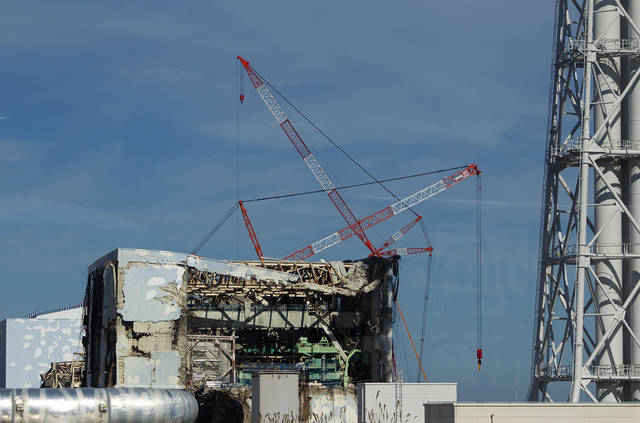Radiation from the Fukushima nuclear reactor disaster in Japan has reached North American shores, but — despite a number of reports shared on social media— scientists say the levels of radiation are so low that it poses no risk to
Radiation from the Fukushima nuclear reactor disaster in Japan has reached North American shores, but — despite a number of reports shared on social media— scientists say the levels of radiation are so low that it poses no risk to public health.
Late last year, researchers announced that Cesium-134 was discovered in waters off the coast of Oregon and in one sockeye salmon in a British Columbia lake. Cesium-134 is considered the fingerprint radiation of the Fukushima disaster, because its short half-life means it could only come from the plant that suffered meltdowns following the 2011 Japanese tsunami.
The news reports have been used as the basis for viral stories about the radiation. One story from alternativemediasyndicate.com carried the headline: “Fukushima Radiation: Your Days of Eating Pacific Ocean Fish Are Over, Or Worse.” Another story from organicandhealthy.org labeled the discovery of the salmon as “bad news for everyone” and described the U.S. West Coast as “contaminated.”
Ken Buesseler, a senior scientist at Massachusetts’ Woods Hole Oceanographic Institution, has traveled to Japan numerous times since 2011 to study the Fukushima disaster’s effect on seawater. He also leads a sampling project to study the radiation as it makes its way across the Pacific Ocean to North America.
It’s fair to be concerned about radiation, he said, but the levels detected are far too small to make anyone sick: They are 1,000 times less than what a person would be exposed to during a routine dental x-ray.
“It’s even less than things like CT scans or flying in a plane or even living at high altitude. Personally I’m not concerned about those levels,” he said.
Research scientist John Smith, who works for Canada’s fisheries and oceans department, said the “crazy low levels” of cesium found in the salmon were suspected all along.
“It’s absolutely no surprise there would be a little bit of Fukushima cesium in this fish and it’s really at a level we would have expected it to be,” he said.
The U.S. Nuclear Regulatory Commission said in a 2015 report on the impact of seaborne Fukushima radiation on the U.S. that evidence showed the levels “fall well short of posing any U.S. health or environmental risk.” In January, state officials in Alaska announced that tests of seafood in the state’s waters found no detectable amounts of radiation from the plant.
“This has been going on since the beginning of the Fukushima accident,” adds Smith of some reports that have surfaced online since the disaster. “All this kind of fake news and scary news.”
___
This story is part of an ongoing Associated Press effort to fact-check claims in suspected false news stories.



